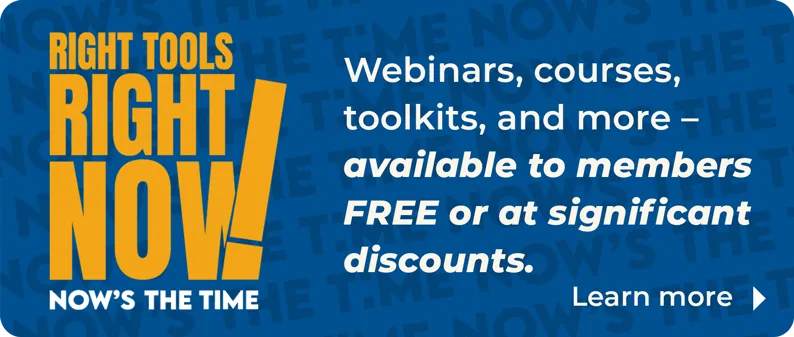At my leadership installation event last December, I quickly realized that our executive committee and board of directors had huge age diversity. The president and past president are in the silent generation (yes, in their 70s), our president elect is a millennial (in his early 30s) and our fi rst vice president is in Generation X (in her 40s). The age range of the collective leadership is 28 to over 70, and although they seem to get along and they get things accomplished, I began to notice that the generations often had a failure to communicate. Sometimes these leaders seemed like they were speaking diff erent languages, and staff was the interpreter, which created an impediment to productivity.
Did they really not understand each other? Did they not respect each other? When I asked the board how they felt about serving with multiple generations, I got the expected politically correct responses: “It’s great because older members have more experience,” and “It’s great because younger members have new ideas.” But I suspected that more feelings might be hidden much deeper.
In order to uncover more about how everyone really felt, I promised anonymity. And I got a lot of responses like these:
- “If I had a frustration with the younger generation it would be with their work ethic. They seem to be much more laid back.”
- “Sometimes the older generations think they know best, and they are not willing to listen to new ideas.”
- “Younger generations think they know everything due to being high-tech, and they feel they are possibly more educated.”
- “The older generations often think they know all the answers, and have a ‘been there done that, let’s not look at it again’ attitude.”
These sentiments are played out on our societal level, so it is no surprise to see them at the micro level within our leadership. The diff erence, however, is that we still have to keep this 2,500-member ship cruising forward, which means communication is critical.
These general perceptions within our leadership, whether true or not, often chocked their ability to appreciate alternate views and to work eff ectively in the best interest of the membership as a whole. This aff ected our programs, policies, services, and strategic goals.
For example, our president is focused on the long-term, best use and maintenance of our physical association building, while our president elect doesn’t even think we will need a building in a few years. At times it truly feels like it’s not just diffi cult to communicate but that we are not even having the same conversation.
Another example; On the issue of supporting local development, the group was mainly split along generational lines with younger board members more willing to embrace pro-development philosophies and aff ordable housing options even if they required greater density. On the other side, some older board members supported protecting open spaces and the area’s rural and recreational lifestyle.
Generations hear things diff erently, and they say things diff erently. Does saying that past boards have been too conservative in spending money mean that future boards are going to blow it all? Does saying that younger generations depend on technology too much mean they are bad board members? It all depends on how these comments are interpreted and by whom.
One step we took was to work with each board member to uncover how they want to be communicated with and how they can best communicate with their peers. Our president elect (a millennial) rarely looks at email and wants texts, while our president emails. Our fi rst vice president uses social media and our past president prefers inperson conversations. Going forward we are working to have staff better bridge the gaps in communication and help get to a place of understanding.
In our investigation of generational differences, did we find a silver bullet or one language that everyone understood? Unfortunately, no. But having the conversation, addressing the issue, and getting past the stereotypes set us on the right course. The more our members learn about members of other generations, the more their opposite perspectives and values make sense. That laid-back approach to work isn’t lazy, it’s a way to balance work and personal life to reduce stress and be more productive. That objection to dense development isn’t wanting to hold on to the past, it’s an experience-based belief that nature, once paved over, doesn’t return.
As we grapple with the changes in the industry, we know our boards must be as diverse as our membership, so we need to have these discussions about intergenerational communication at the board level, no matter how difficult.
-Kim Gammond








